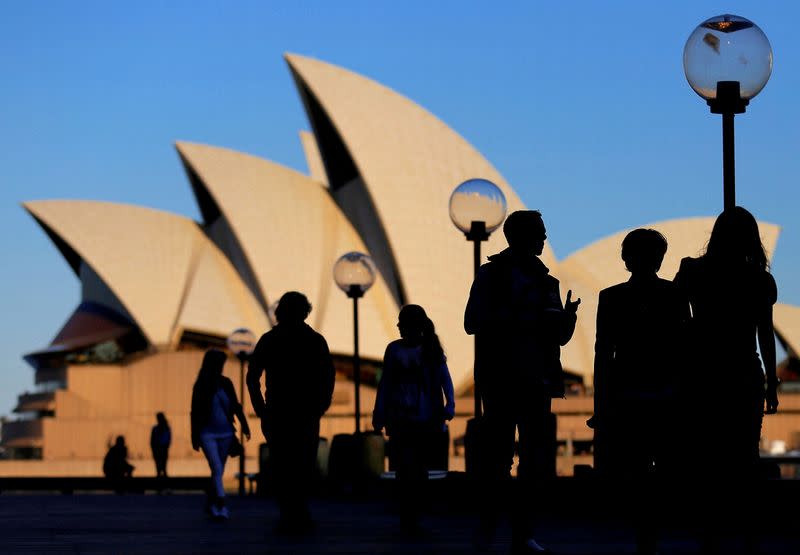Australia's strong May employment leaves RBA little breathing room

By Stella Qiu
SYDNEY (Reuters) -Australian employment blew past expectations in May, while the jobless rate edged lower and participation rate climbed to a record high, an extraordinarily strong report that adds pressure on the central bank to raise interest rates further.
Figures from the Australian Bureau of Statistics (ABS) on Thursday showed net employment rose by 75,900 in May from April, when they fell by a revised 4,000, a result likely due to the Easter holiday. Market forecasts had been for a rise of 15,000 jobs.
The jobless rate edged back to near 50-year lows at 3.6%, when analysts had expected a steady 3.7%, and the participation rate climbed to a record high of 66.9% from 66.7%, thanks to a greater share of women entering the labour force.
Full-time employment rebounded 61,700 from April when it fell by a revised 28,600.
The broad strength of the report added to the case that the Reserve Bank of Australia (RBA) has more work to do to tame inflation, even after tightening by 400 basis points to an 11-year high of 4.1%, including a surprise rise earlier this month.
Markets moved to price in an almost split chance of another quarter-point hike in July, with rates almost certain to hit 4.6% by November.
The bond yield curve, which was already inverted to signal risks of a recession, inverted further after the jobs report, with the spread between 10-year and three-year government bond yields turning negative.
Adam Boyton, head of Australian Economics at ANZ, now sees the cash rate peaking at 4.6% by August after the strong jobs report, up from the previous forecast of 4.35%.
"While the weakness in Q1 GDP suggests the pace of jobs growth should moderate – and by a lot – over coming months, the general robustness of the labour force survey over 2023 to date is undeniable and suggests some ongoing momentum in the economy," said Boyton.
Indeed, job advertisements were mostly steady in May after three months of declines and remained 52% above pre-COVID levels.
RBA Governor Philip Lowe, who had been keen to preserve the labour market's strong gains, warned this month the central bank is willing to sacrifice jobs to bring inflation back to target by mid-2025.
The hawkish turn led many economists to revise up the chance of a recession this year and unemployment rate expectations in coming years, with some predicting joblessness could reach as high as 5%.
(Reporting by Stella Qiu; Editing by Muralikumar Anantharaman, Sonali Paul and Lincoln Feast.)

 Yahoo Finance
Yahoo Finance 